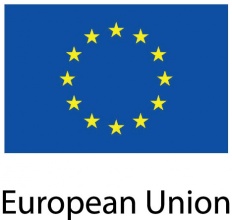Part 1 of 2 Parts
Several countries appear to have suddenly welcomed nuclear energy as part of their clean energy mix. This was partially triggered by global gas shortages and rising oil price. However, this apparent renaissance of nuclear energy is not appearing everywhere. Many countries are still skeptical about the technology. They are unwilling to accept nuclear power as the answer to the globe’s energy problems. This divide is especially present in Europe. It could have a major impact on the development of the nuclear power plant pipeline across the region. Some members of the European Union (EU) reject plans for increasing the E.U.’s nuclear energy capacity.
For decades, major powers have been moving away from nuclear power. This was largely due to safety concerns following three would-famous nuclear disasters. Now, some of these same major powers are putting nuclear energy back on the agenda as they race to ensure their energy security and transition away from fossil fuels. The U.S. and the U.K. are two in which the governments are offering high levels of funding and political backing for new nuclear reactor projects to support a green transition.
In the U.S., the nuclear energy output has been largely unchanged for the last forty years. It has provided about nineteen percent of the country’s electricity at present. However, a reconsideration of the safety risks involved with nuclear operations when set against the current climate situation has made the U.S. more open to new nuclear projects. President Biden included funding for nuclear projects in his Inflation Reduction Act (IRA).
On the other side of the Atlantic, the U.K. government recently purchased a twenty percent stake in the Sizewell C nuclear plant in Suffolk for one hundred million dollars in June. The Hinkley Point C reactor being built by the French state-owned EDF is expected to be operating by 2027. The ultimate cost is estimated to be around thirty billion dollars. Former Prime Minister Boris Johnson also recently outlined plans for the development of eight new nuclear reactors by 2030.
Hungary is remaining strongly committed to a planned nuclear power plant project with Russia. The Paks 2 project is set to be funded by Russia with a ten-billion-dollar loan. It follows the Paks 1 nuclear power station which is located about an hour south of Budapest. It was constructed by the Soviet Union in the 1980s. The Paks 1 licensed lifespan is coming to an end in the 2030s. Prime Minister Viktor Orban signed a deal with Russian President Vladimir Putin for the construction of two new twelve hundred megawatt reactors next to the old one. Ground-clearing work began in last August after several years of delays. The Paks 2 plant was expected to go into operation in 2026. However, as time went by, this became increasingly unlikely. The war in Ukraine is also causing delays.
Finland has already abandoned a Russian-built nuclear power plant on the Hanhikivi peninsula midway through its construction because of the Ukraine war. Several other European countries oppose Hungary’s close relations with Russia. This encouraged Viktor Orban to cut ties with Putin.
Please read Part 2 next
